Thursday, 2:00pm
28 August 2014
Munari in Milan
Munari politecnico
Museo del Novecento, Milan, Italy, until 7 September 2014‘Munari politecnico’, at the Museo del Novecento, champions some less familiar aspects of the Italian designer-artist’s body of work
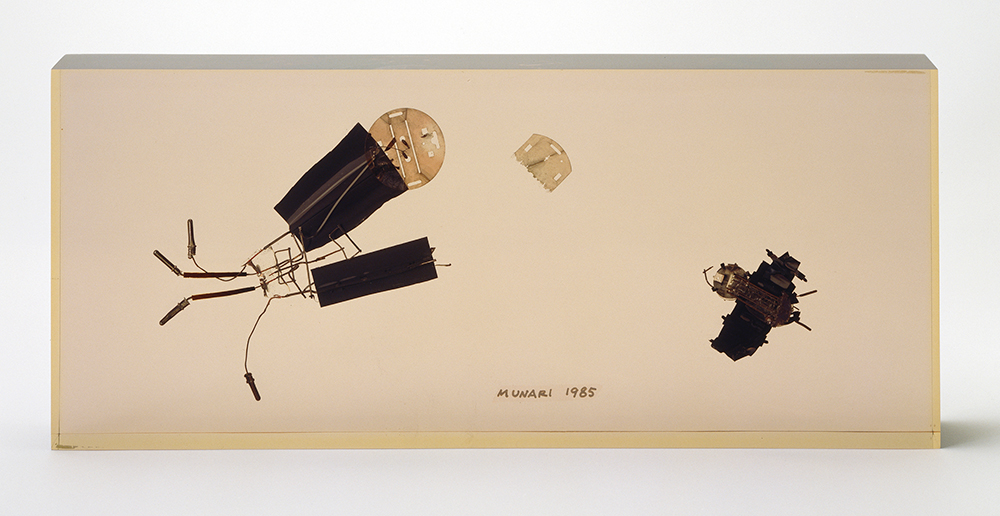
Bruno Munari was the Richard Feynman of design, an innovator, a born teacher, a jack-of-all-trades with a quixotic nature. He never stopped inventing and questioning.
In the latter part of his career, he became better known for playful books and imaginative lectures, and as a popular advocate of the design-art continuum.
Macchina inutile, 1934-83.
Top: Fossili del 2000, 1985.
Both items courtesy Fondazione J. Vodoz & B. Danese. Photo: Roberto Marossi.
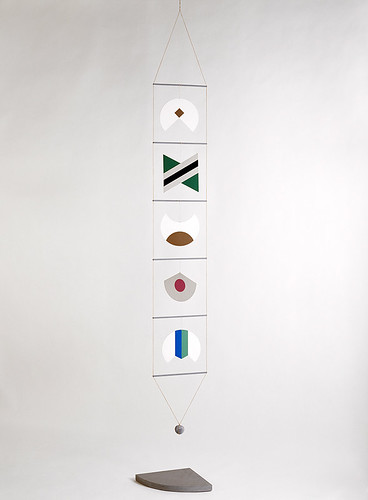
Yet in his prime he was one of the most prominent designers of Mussolini-era Italy, designing books, posters and magazines (see ‘Milan’s anarchic Modernist’ in Eye 85).
Munari also made three-dimensional constructions that explored the increasingly technological world around him, such as his ‘Macchine inutili’ [‘Useless Machines’]. Later, he continued this theme by imagining an ‘archeology of the future’, in works such as his 1985 Fossili del 2000 (top).
Scultura da viaggio, 1958. Edizione Isetan Tokyo cartoncino bicolore. Courtesy Fondazione J. Vodoz & B. Danese. Photo: Roberto Marossi.
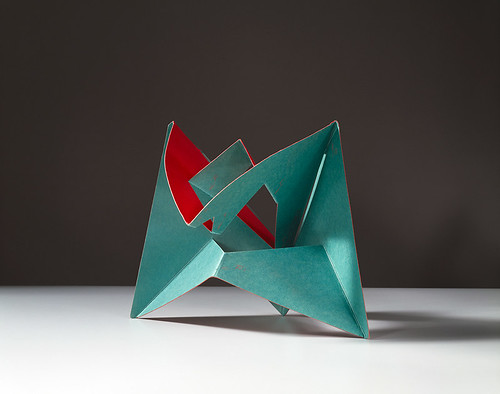
‘Munari politecnico’, a modest but thoughtfully curated exhibition at Milan’s Museo del Novecento (6 April – 7 September 2014), champions some less familiar aspects of the Italian designer. The show presents an impressive range of objects and kinetic sculptures made by Munari, and juxtaposes them with work by artists and designers with whom Munari felt a strong empathy, including Mary Viera, Enzo Mari and Marina Apollonio. A short leaflet published to accompany the exhibition articulates Munari’s roles ‘as colleague, master or friend’ in the flourishing community of Milanese artists, including Carlo Belloli, Gillo Dorfles and the Gruppo T.
Xerografia originale, 1966. Courtesy Fondazione J. Vodoz and B. Danese. Photo: Roberto Marossi.
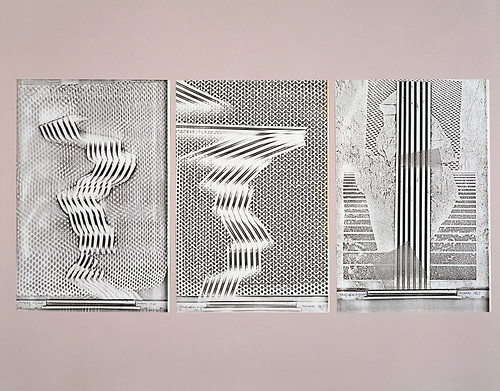
Marco Sammicheli is the curator (with Giovanni Rubino) of ‘Munari politecnico’. We contacted him by email.
Eye: Did you initiate the exhibition?
MS: The impetus came from Marina Pugliese, director of the Museo del Novecento, who invited me. I proposed a project on the way Munari used artistic experimentations as a primary platform for all his works. I could primarly use works from the Vodoz and Danese Foundation, but then I included pieces from ISISUF and from private collections.
Before this show I already worked with Museo del Novecento on other projects between art and design (Gabrile De Vecchi, Ignazio Gardella, Lora Lamm, Vico Magistretti) but always involving contemporary designers such as Odoardo Fioravanti, Paolo Giacomazzi, Elisa Macellari and Argot au La Maison Mobile.
Eye: Has the exhibition helped to expand the public's view of Munari?
MS: I hope so. I arranged many public talks to present stories and collaborations with other artists and designers such as Giovanni Anceschi, Grazia Varisco, Franco Grignani, Davide Mosconi, Max Huber, Victor Vasarely, Mary Vieira and Carlo Belloli.
Eye: Is there a catalogue for ‘Munari politecnico’?
MS: I could not publish a catalogue for various reasons, but the collector Massimo Cirulli has sponsored the production of a conference. Next spring we will publish a book with essays by me , Giovanni Rubino and other authors.
Eye: What is your view of Munari’s reputation in Italy?
MS: During a public conference in 2013, Paola Antonelli [senior curator at MoMA in New York] asked why Munari’s reputation is so ‘light and unexplored’ in Italy. I raised my hand and said that it was because there is a publishing house controlling Munari’s legacy, and that in my opinion they present just one vision of his work.
Bruno Munari in his studio, Milan, 1988.
© Isisuf Istituto internazionale di studi sul Futurismo.
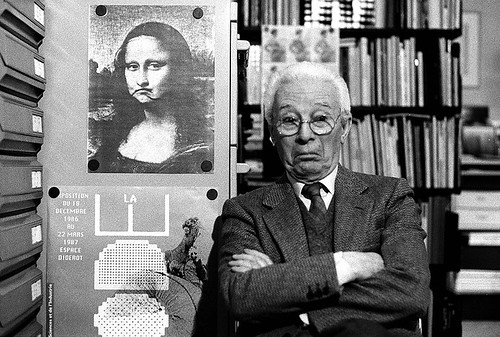
Eye: What next?
MS: I’d like to present the new Munari book during Milano design week 2015.
Eye: Is Munari a personal cause of yours?
MS: Well, I don’t like it when the complexity of an artist or designer is simplified for commercial reasons. That is what has been happening with Munari. And that is why I took on this specific job.
Le macchine di Munari, 1941, collage cover. Courtesy Fondazione J. Vodoz & B. Danese. Photo: Roberto Marossi.
 ‘Munari Politecnico’ runs until 7 September 2014 at Museo del Novecento, Milan, Italy.
‘Munari Politecnico’ runs until 7 September 2014 at Museo del Novecento, Milan, Italy.
See Alessandro Colizzi’s article ‘Milan’s anarchic Modernist’ in Eye 85.
Portrait of Munari by fellow designer Albe Steiner, 1941. Archivi Storici, Archivio Albe e Lica Steiner, Politecnico di Milano. All reproductions © Bruno Munari. Courtesy Corraini Edizioni.
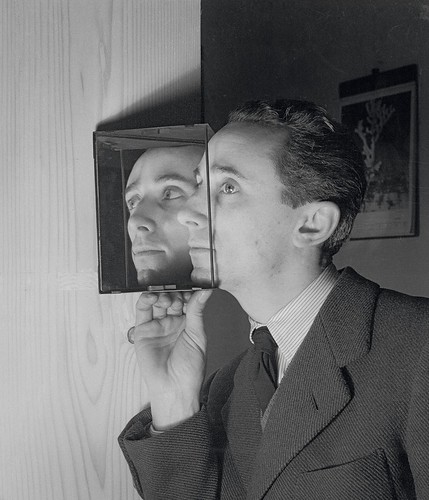
Eye is the world’s most beautiful and collectable graphic design journal, published quarterly for professional designers, students and anyone interested in critical, informed writing about graphic design and visual culture. It is available from all good design bookshops and online at the Eye shop, where you can buy subscriptions, back issues and single copies of the latest issue
